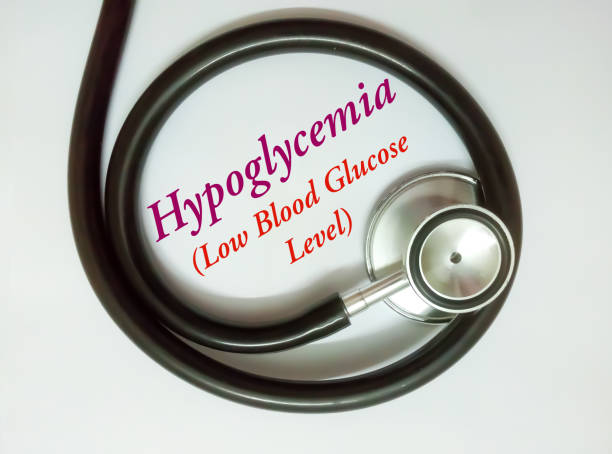Make an Appointment
Low blood sugar, also known as hypoglycemia, happens when your blood sugar or glucose drops below a healthy range. If your blood sugar drops too low, it can be a dangerous condition that needs immediate treatment.
Hypoglycemia is most common in people with diabetes
. Taking too much medication, skipping meals, not eating enough, or exercising more than usual can lead to low blood sugar if you have diabetes.
Why is low blood sugar dangerous? Blood sugar is also known as glucose. Glucose comes from food and serves as an important energy source for your body. Carbohydrates found in foods such as rice, potatoes, bread, tortillas, cereal, fruit, vegetables, and milk are your body’s main source of glucose. After you eat, glucose is absorbed into your bloodstream, where it travels to your body’s cells. A hormone called insulin, which is made in your pancreas, helps your cells absorb the glucose in your blood. Your cells then use glucose for energy.
If you eat more glucose than you need, your body will store the extra glucose in your liver and muscles or change it into fat so it can be used for energy when it’s needed later. If our cells don’t get glucose, your body can’t perform its normal functions. In the short term, people who aren’t on medications that increase insulin have enough glucose to maintain blood sugar levels, and the liver can make glucose if needed. However, if you take insulin medication, a short-term reduction in blood glucose can cause problems. In this situation, immediate treatment for low blood sugar levels is very important to prevent more serious symptoms from developing.
What are the symptoms of hypoglycemia? Why is low blood sugar dangerous? Symptoms of low blood sugar can occur suddenly. They include pale skin, unexplained fatigue, hunger, shaking, sweating, dizziness, rapid heartbeat, mood changes, irritability/anxiety, headache, difficulty sleeping, skin tingling, blurry vision, trouble thinking clearly or concentrating or loss of consciousness, seizure, or coma. People with hypoglycemic unawareness do not know their blood sugar is dropping. If you have this condition, your blood sugar can drop without you noticing it.
Without immediate treatment, you may faint, experience a seizure, or even go into a coma.
Mildly low blood sugar levels are somewhat common for people with diabetes. However, severely low blood sugar levels can be life-threatening. They may lead to seizures and nervous system damage if left untreated long enough. Immediate treatment is critical. It’s important to recognize your symptoms and treat them quickly. Treat low blood sugar as soon as possible. Avoid driving if you are experiencing low blood sugar, as it can increase your risk of having an accident.
There are several ways you can prevent low blood sugar. Regularly checking your blood sugar level can help you keep it in your target range. It’s a good idea to keep carbohydrate-rich snacks on hand at all times in case your blood sugar dips while you’re out and about. As mentioned above, some good choices are hard candies, fresh or dried fruit, fruit juice, jelly beans, and gumdrops.
Exercise uses up energy, so it can quickly cause your blood sugar to drop if you haven’t eaten enough beforehand. Check your blood sugar 1 to 2 hours before exercising to make sure it’s within your target range. If it’s too low, eat a small meal or carbohydrate-rich snack. If you plan to exercise for an hour or longer, consume additional carbohydrates during your workout. If you follow a meal plan or take medications that increase insulin to manage low blood sugar, it’s important to stick to the plan your doctor prescribed to help prevent drops in your blood sugar level.


17 Comments
Pingback: Why is low blood sugar dangerous? – Sujata Birla Hospital
Pingback: Health Benefits Of Cabbage | Birla Healthcare
Pingback: White Vegetables and Their Benefits | Diet |Birla Hospital
Pingback: 7 Ayurvedic Superfoods In Your Kitchen – Birla Ayurveda
Pingback: 5 Best Sources of Vitamin A | Retinol & Retinyl Esters | Birla Hospital
Pingback: 5 Ayurvedic Tips To Restore Hormonal Imbalance – Birla Ayurveda
Pingback: Health Effects of Junk Food | Birla Healthcare
Pingback: Yash Birla: Health & Fitness | Healthy Lifestyle | Yash Birla
Pingback: Top 5 Health Benefits of Quinoa | Birla Healthcare
Pingback: 5 Powerhouse Vegetables to Include in your Daily Diet | Sujata Birla Hospital
Pingback: World Fertility Day: 5 Natural Remedies to Boost Fertility | Sujata Birla Hospital
Pingback: Creatine: What Is It and What It Does? – Birla Healthcare
Pingback: Creatine: What Is It and What It Does? | Birla Healthcare
Pingback: World Diabetes Day: Tips for Preventing High Blood Sugar in Teens | Sujata Birla Hospital
Pingback: How Hormones Affect Your Health | Sujata Birla Hospital
Pingback: World Heart Day | Sujata Birla Hospital
Pingback: Difference in Diabetes Symptoms between Men and Women | Sujata Birla Hospital